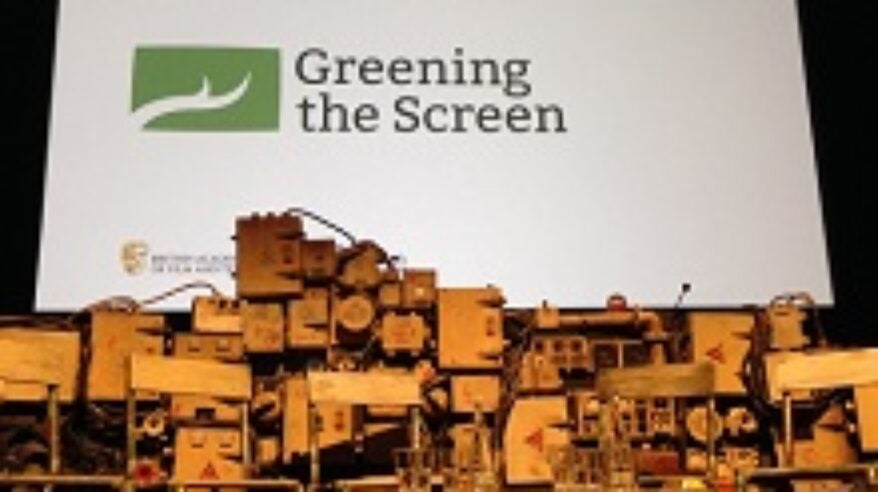Greening the Screen: The way forward

Sustainability in film and TV production seems to be gaining steam, in both factual and scripted. Recently we attended the annual Greening The Screen conference at BAFTA, hosted and moderated by celebrity green campaigner Alistair McGowan, with a panel of guests working within film and TV. Conversations covered many topics including what their individual productions were doing that could be considered eco-friendly.
Â
Paul Williams, producer of Wonders of the Monsoon, chronicled some of their trials and solutions: “Wonders of the Monsoon is set across 12 countries and shot over two years, making the carbon emissions from all those flights enormous. Twenty eight tonnes of carbon is emitted from one shoot since we have a lot of weight added from 30 bags of kit. Our solution was to use cameramen in India that we knew and trusted, so we were able to direct them from afar and not have to physically go there. We ended up saving 100 tonnes of carbon by cutting out six international flights. That would fill 28 houses.”
Bex Hopkins, head of production management at the National Film and Television School, said that all student productions now use Albert+ (a sustainability mark indicating a production has taken steps to manage and reduce its environmental impact) to make sure all their projects are eco-friendly.
You’ve got the power
Others have taken measurements towards greener energy Tim Scoones, executive producer of Winterwatch, for example, says he is now using methanol fuel cells to power cameras, lights and other pieces of equipment.
“They’re very easy to refuel and they’re completely silent which is perfect for us when we’re up filming in the Scottish mountains,” he says. “The only waste they produce is carbon dioxide and water. We’ve also now switched from a petrol jib to a methanol jib, which has actually made filming much smoother and far quieter.”
Â
The CEO and co-founder of Earth Angel and eco supervisor for The Amazing Spiderman 2, Noah and a host of other major productions, Emellie O’Brien, graced the audience and the panel with a short video about the future of sustainability. O’Brien managed to save $47,000 on The Amazing Spiderman 2 through green efficiency and $45,000 on Noah from selling the 450,000lbs of metal and steel used from the production.
However, even with these savings, productions are still reticent on following through as with anything the first step is the hardest. Though producers often say that they are not deeply impacted by becoming ‘green’ and if anything it helped.
Wendy Wright, line producer on BBC’s Casualty, mentioned the production had cut down on paper by 75% through scripts and call sheets being made available through mobile overnight. On-screen talent also voice their concerns. Cameron Diaz, for example, reported that no set that she’s on can have polystyrene on it, as it’s completely non-recyclable. This is something Tim Sealey, head of production at RoughCut, has mimicked in his own productions.
Should we substitute reality?
​With the evolution of VFX, the question was raised as to whether that could possibly replace the construction of huge sets, which often include chemicals, heavy vehicles and other raw materials. Howard Ella, line producer from The Interceptor, said: “I don’t think that drama would consider it. We may get to a point where we use it outside a window so we can pretend you’re somewhere else but that’s driving up costs. In TV we don’t real
Share this Article















